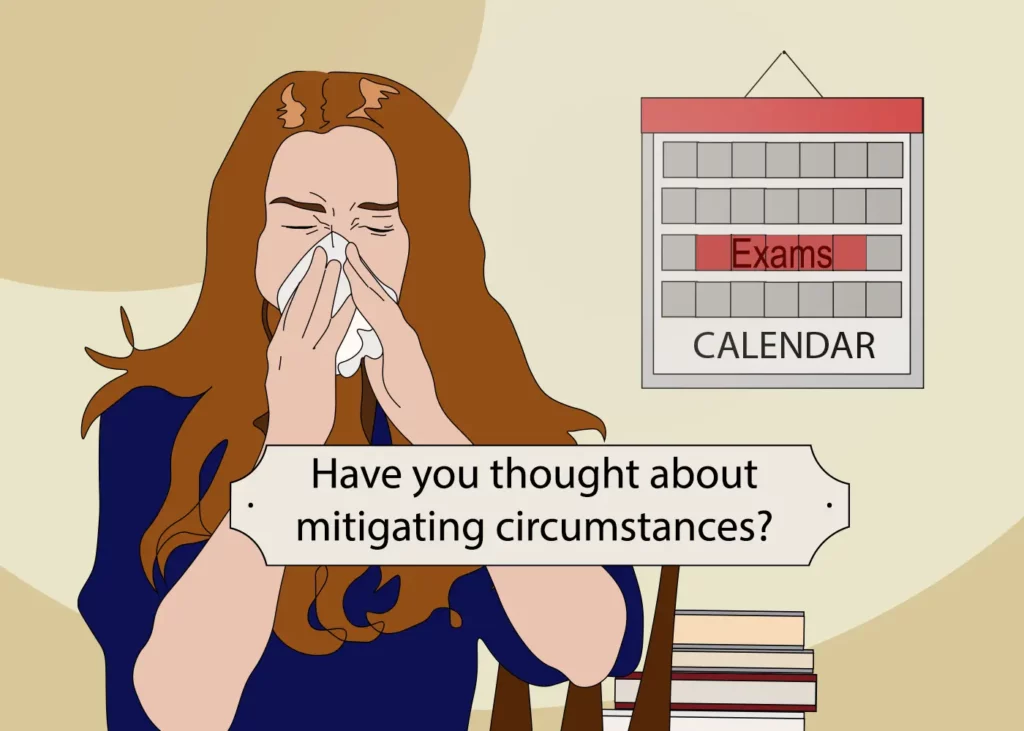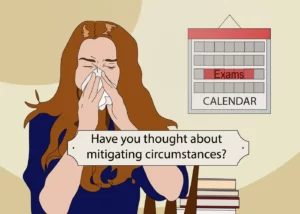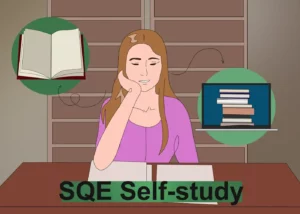
SQE Preparation Tips: SQE1 Practice Questions
Discover essential preparation tips for SQE1 Practice Questions. This blog offers strategies, insights, and resources to excel in your SQE1 exam.

Making a claim for mitigating circumstances is never easy, especially if the reason for your mitigating circumstances has not only affected your studies, but your life. Given, that preparation for the SQE exams will last for months it is not uncommon for a certain event which impacts your ability to study for the SQE or be nearing your SQE exam date. Here we will talk about the steps you will need to take to make a claim for mitigating circumstances.
The definition for ‘mitigating circumstances’ for the SQE means:
If any of these has happened to you, they must have materially and adversely affected your marks or performance in an SQE assessment. Therefore, if your reason to claim mitigating circumstances satisfies the above definition, you will likely be able to sit or retake the exam at a later date.
A mistake or irregularity during your assessment could occur on the day of your assessment or afterwards when your assessment answers are being processed and marked. No system is perfect and mistakes can happen. However, you must make sure that if you do come across a mistake or irregularity on the day of your assessment, that you communicate this to an exam invigilator as soon as possible before leaving the venue. A mistake or irregularity during an exam may be major disruption because of noise during your exam, having the wrong or no exam paper when arriving at your test centre or the centre being closed on short notice.
Evidence of bias in the conduct of an exam is where on the day of your exam, you feel that you are at a disadvantage to other exam takers at the same venue. This will usually arise as a result of a technical error. Though evidence of bias in the conduct of your assessment is extremely rare and obvious it must still be declared by yourself as a mitigating circumstance.
The most common reason to apply for mitigating circumstances will be due to illness or other personal circumstances beyond your reasonable control. An illness must still be proven to have materially and adversely affected your marks or performance in an SQE assessment. Furthermore, the SQE assessment follows a ‘fit to sit’ policy. This means that if you decide to take the exam you declare that you do not believe that there is any reason that you are adversely or materially affected by an illness during the taking of your exam. Therefore, it is recommended that if you are indeed too ill to sit through two entire exams in a day, that you do not sit the exams and apply for mitigating circumstances instead. Personal circumstances beyond your reasonable control may include the severe illness or loss of a loved one such as a family member.
Once you finish the assessment and wish to proceed with a claim for mitigating circumstances, you must complete and send off an SQE Mitigating Circumstances Form. If you are taking the SQE 1 exam you must complete the SQE 1 Mitigating Circumstances Form. All claims with regard to the SQE 1 must be made by 4 p.m. on the 5th working days after the relevant assessment date. If you are taking the SQE 2 exam you must complete the SQE 2 Mitigating Circumstances Form. All claims with regard to the SQE 2 exam must be made by 4 p.m. on the fifth working day after the end of the assessment window in question.
The mitigating circumstances form must be accompanied by independent supporting written evidence detailing the reason for mitigating circumstances. For example, if you make a claim due to illness, you must provide a medical certificate or doctor’s note as evidence of the illness which should outline the time period which your illness occurred, the onset and how long it will probably last.
If you do not get your evidence in time (within the 5-day window), you must still submit your mitigating circumstances form and contact the Equality and Quality Team to be advised on the submission of your written evidence.
Where it is not possible to give written evidence, you must still submit your mitigating circumstances form which will be reviewed by a panel. They will review the available information and circumstances outlined in your mitigating circumstances form.
You should receive results of your mitigating circumstances claim in approximately 8 to 9 weeks. In this time period you may receive your results and find that you may have passed. In this instance, your mitigating circumstances will no longer be considered. However, if you fail the particular exam, your mitigating circumstances will be reviewed thoroughly.
For authoritative and comprehensive insight into mitigating circumstances as they relate to the SQE, the official resources provided by the Solicitors Regulation Authority (SRA) are invaluable. The Mitigating Circumstances Policy, accessible here, offers detailed guidelines and policies pertaining to various scenarios and conditions that might affect a candidate’s performance. Additionally, the SRA’s on-demand events, including discussions and seminars on SQE mitigating circumstances, available here, provide further insights and perspectives. These resources are essential for anyone seeking a thorough understanding of the procedures, requirements, and implications of mitigating circumstances in the context of the SQE.

Discover essential preparation tips for SQE1 Practice Questions. This blog offers strategies, insights, and resources to excel in your SQE1 exam.

Understanding SQE Mitigating Circumstances: This informative post offers insights into the special considerations and exemptions within the SQE framework.

Decide between SQE self-study and prep courses. Optimise your legal career with insights into SQE self-study advantages. Explore now.

The Solicitors Regulation Authority (SRA) has announced significant changes in how scores for the SQE1. Read here to find out more.
Introducing Brigitte’s FLK – An online SQE supplementary learning and revision resource to help you in your understanding and application for the SQE preparation course and SQE exam. Founded from the same trusted author of Brigitte’s Notes and Brigitte’s LPC.
Copyright © 2024 Brigitte’s FLK | Brigitte’s FLK is not sponsored or endorsed by any college or university
